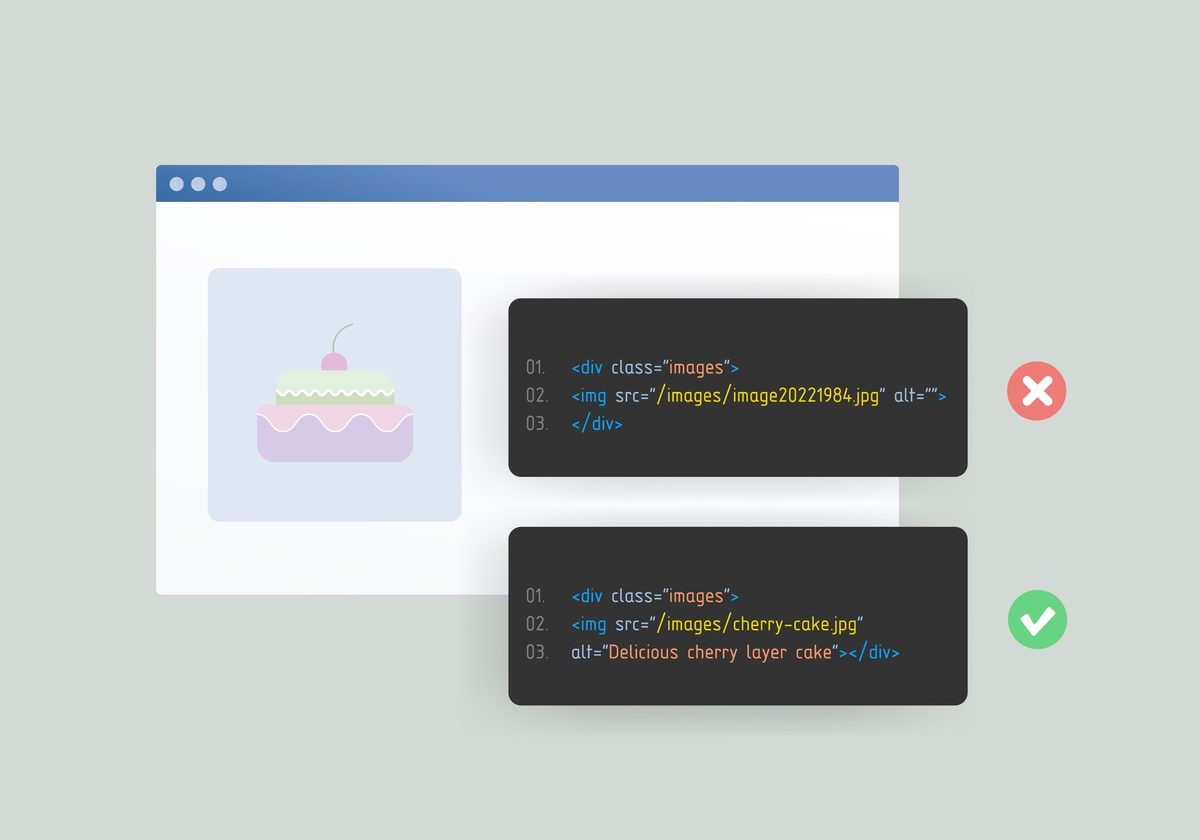6 Alt Text (Alt Tag) Writing Tips to Benefit Readers and SEO
Alt text, short for alternative text and synonymous with alt tag, is a concise textual description of an online image that describes the appearance and provides context as to how the image relates to the rest of the content on the page. The alt text is added within the website’s HTML code and not displayed visually by default. Adding well-written alt text to images within your online content is essential to ensure your website is accessible to all users, especially those that may be visually impaired and using screen reader technology.
Additionally, since search engine crawlers, like Google, cannot easily understand images and graphics, alt tags help the search engine bot understand the content of the image. Adding appropriate alt text to images is a beneficial method to help improve your website's search engine optimization (SEO). Check out these alt text writing tips to help you improve your small business website’s SEO and accessibility.

1. Avoid Keyword Stuffing
While it may seem like a good idea to use as many targeted keywords as possible within your alt text, this keyword stuffing can actually hurt your search engine rankings. When writing alt text, it is more important to focus on describing the image accurately and specifically. Then you can incorporate one or two of your relevant keywords, but only if they fit within the description.
2. Be Specific and Succinct
Keep alt text descriptions short, sweet, and to the point. Consider the image itself and its purpose, as well as the context of the page’s content where the image is displayed. Use a few words to give readers a clear understanding of the image. You should not be writing multiple sentences within as the image’s alt text.
3. Avoid Repetition and Emphasize Differentiation
If text is included as part of the image or graphic, include that text within the alt text. However, be sure to avoid repetition. You do not need to repeat words within your alt text. Additionally, you may have multiple images on the same page that are somewhat similar. Look for ways to emphasize the differences when writing alt text for each image.
4. Do Not Write " Image of…"
When alt text is utilized, it will be evident for either a screen reader or search engine that the alt tag is describing an image or graphic. Therefore, there is no need to write " picture of…" or “…image” as this only takes up space and wastes time and resources. However, in select circumstances, it can be useful to describe the type of image (such as a headshot, graph, chart, etc.) to help add context.
5. Check for Spelling Mistakes
Be sure to double check alt text for any spelling or grammar mistakes. Spelling and/or grammar errors not only confuse readers, but they could also interfere with the interpretation of your site’s content by search engines.
6. Use Proper Spacing
Many content management systems (CMS) will automatically add alt tags to an image based upon the image’s filename. Unfortunately, automatically generated alt tags are not usually well-optimized. Even if the image’s filename is excellent, filenames often utilize dashes or underscores when uploaded to the web. For your alt tags, ensure there are proper spaces between words.
Additional Tools to Make Detecting and Writing Alt Text Easier
Now that you know the best practices for adding alt tags to images, it is time to get started. First, you must analyze whether or not your images already contain alt text and if the text is accurate! You can use an SEO auditing tool like Semrush to analyze your website to discover images missing alt tags. This tool can also show what alt text is present on current images, as existing alt tags may need to be optimized. As an added bonus, SEO tools like Semrush also check for hundreds of other search engine optimization opportunities.
Once you have determined which images need alt text added or modified, craft your optimized alt tag and be sure to use a spelling and grammar editor like Grammarly to save you time and eliminate errors.
Contact Our SEO Specialists
Well-written alt text is an essential part of your small business’ website SEO. For more alt text writing or SEO tips, subscribe to our newsletter. To learn more about our SEO services, contact our team today!
At no additional cost to you, we may receive a commission if you click on some of the links on this website and make a purchase.
About the author
Ben Seidel is the CEO and Founder of Igniting Business. Ben has been serving hundreds of small businesses with web design and SEO services for over 15 years and covering digital marketing related topics since 2012.
Over the years, Ben has been recognized on a local and national level, including entrepreneurship awards from both the NFIB and NASE and being featured in publications such as CNBC Universal, Yahoo News, Intuit Small Business, CIO.com, Mizzou Magazine, and Fox Business.